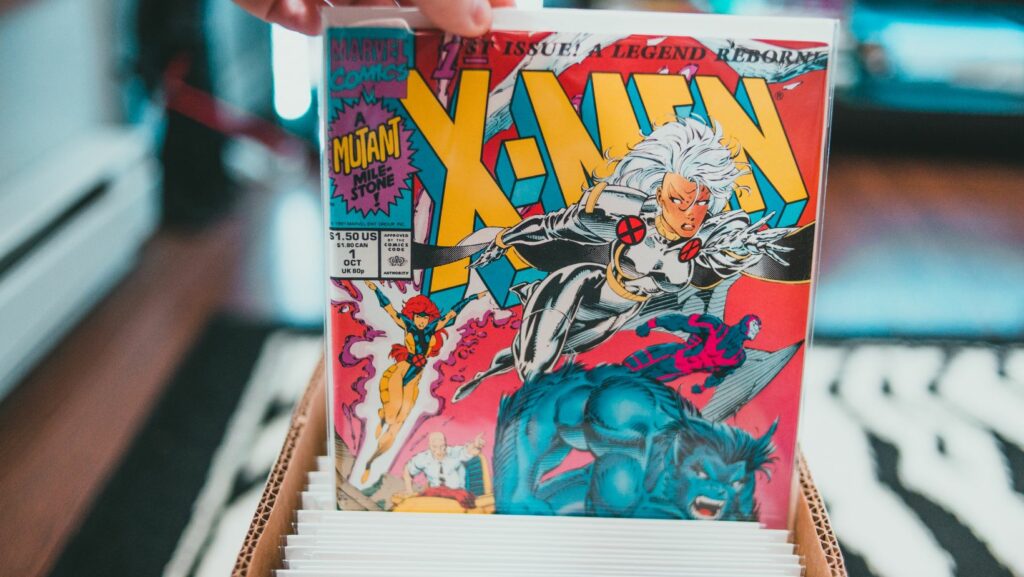Manga, a cornerstone of Japanese pop culture, has captivated readers worldwide with its unique storytelling and artistic flair. Originating in Japan, these graphic novels span a variety of genres, from action-packed adventures to heartwarming romances, ensuring there’s something for everyone. Manga’s influence extends beyond its pages, impacting fashion, animation, and even global pop culture.
What sets manga apart is its ability to blend intricate plots with visually stunning artwork. Each panel is meticulously crafted to convey emotions and actions, drawing readers into immersive worlds. As manga continues to grow in popularity, it’s clear that its appeal transcends borders, resonating with audiences of all ages and backgrounds.
Manga
Manga represents a powerful cultural phenomenon originating from Japan. Its influence on global media and entertainment is immense, spanning genres and art styles.
What Is Manga?
 Manga comprises Japanese comic books or graphic novels typically serialized in magazines. These comics cover diverse genres like action, adventure, romance, and fantasy. Unlike Western comics that often employ color, manga usually features black-and-white artwork, allowing artists to focus on intricate details and expressive facial features. Readers typically consume manga from right to left, maintaining traditional Japanese reading orientation.
Manga comprises Japanese comic books or graphic novels typically serialized in magazines. These comics cover diverse genres like action, adventure, romance, and fantasy. Unlike Western comics that often employ color, manga usually features black-and-white artwork, allowing artists to focus on intricate details and expressive facial features. Readers typically consume manga from right to left, maintaining traditional Japanese reading orientation.
The History of Manga
Manga’s roots trace back to the 12th century, with early examples found in scrolls like the Choju-jinbutsu-giga. However, modern manga formation began in the late 19th century, influenced by Western comic strips and Japanese art styles. Osamu Tezuka, often called the “God of Manga,” revolutionized the medium in the 1940s with works like “Astro Boy,” integrating dynamic storytelling and cinematic techniques. Post-World War II, manga’s popularity surged, becoming a significant part of Japanese culture and later, a global phenomenon.
Throughout the decades, manga evolved, reflecting societal changes and technological advancements. The 1980s saw the international spread of manga, with iconic series like “Dragon Ball” and “Akira” catching global attention. By the 21st century, digital platforms facilitated manga’s accessibility, cementing its place in global entertainment.
Genres and Styles of Manga
 Manga caters to diverse audiences through various genres and styles, offering something for everyone. Different types target specific age groups and genders, enhancing their unique appeal.
Manga caters to diverse audiences through various genres and styles, offering something for everyone. Different types target specific age groups and genders, enhancing their unique appeal.
Shonen: Manga for Young Boys
Shonen manga targets young boys, typically ages 12-18. They feature themes like friendship, adventure, and overcoming challenges. Popular examples include “Naruto,” “One Piece,” and “Dragon Ball.” Character development and epic battles are central elements, inspiring readers with tales of heroism and growth.
Shojo: Manga for Young Girls
Shojo manga caters to young girls, typically ages 10-18. They often focus on romance, personal relationships, and emotional growth. Series like “Sailor Moon,” “Fruits Basket,” and “Ouran High School Host Club” exemplify this genre. Art styles tend to be more elegant, emphasizing character expressions and intricate backgrounds.
Seinen and Josei: Adult-Oriented Manga
Seinen manga targets adult men, usually ages 18-40. They often explore complex plots, mature themes, and detailed artwork. Examples include “Berserk,” “Attack on Titan,” and “Tokyo Ghoul.” Josei manga, targeting adult women, delves into romance, daily life, and professional experiences. Notable titles include “Nana,” “Paradise Kiss,” and “Honey and Clover.”
Overall, these genres reflect manga’s adaptability and its wide-ranging appeal, making it a significant cultural phenomenon globally.
Manga’s Impact on Global Pop Culture
Manga plays a crucial role in global pop culture. Its influence extends beyond literature into various forms of entertainment and artistic expressions.
Manga and Anime: A Synergistic Relationship
 Anime often adapts popular manga into animated series or movies. This symbiotic relationship boosts the popularity of both mediums. Notable examples include “Naruto” and “Attack on Titan.” Anime brings manga stories to life through dynamic visuals and sound.
Anime often adapts popular manga into animated series or movies. This symbiotic relationship boosts the popularity of both mediums. Notable examples include “Naruto” and “Attack on Titan.” Anime brings manga stories to life through dynamic visuals and sound.
Popular anime conventions, such as Anime Expo and Comic-Con, showcase manga and anime collaborations. They attract millions of fans annually, highlighting the importance of this relationship. Merchandise sales, including action figures, posters, and apparel, further demonstrate the commercial success derived from this synergy.
Conclusion
Manga’s rich history and global influence make it a fascinating subject for both new and seasoned readers. Its evolution from ancient art to modern storytelling showcases its enduring appeal and cultural significance. With a wide array of genres and series to choose from, there’s something for everyone, whether they’re into action-packed adventures or heartwarming romances.
Getting started with manga has never been easier thanks to numerous resources and platforms available. From physical stores to online retailers and dedicated apps, readers have countless options to explore and enjoy this unique art form. As manga continues to captivate audiences worldwide, it remains a testament to the power of storytelling and creativity.

